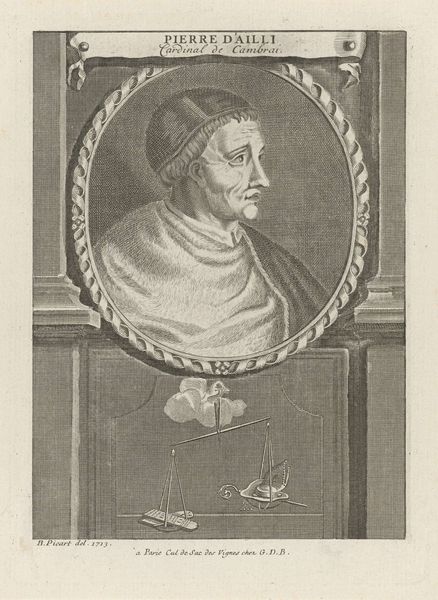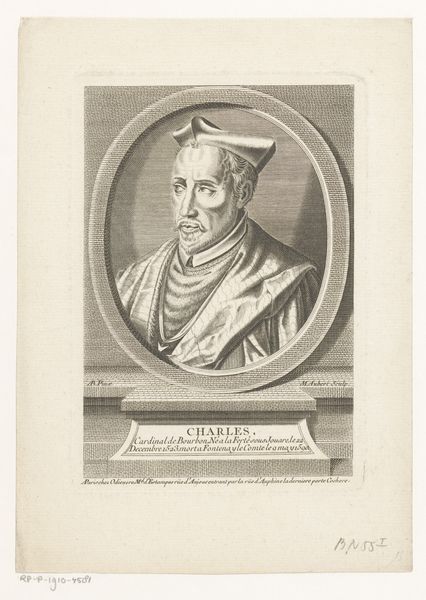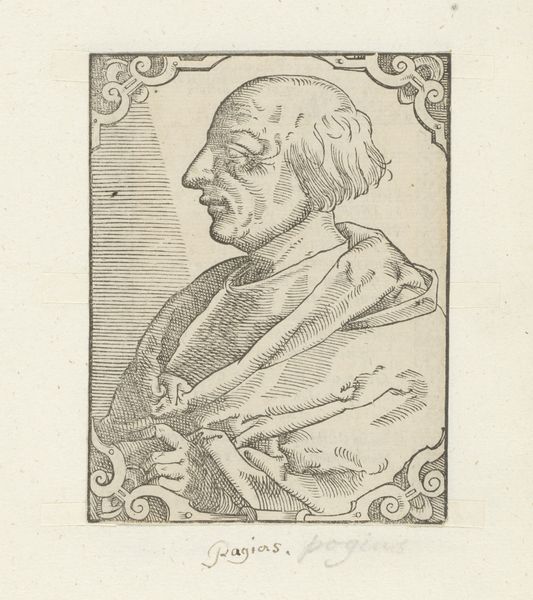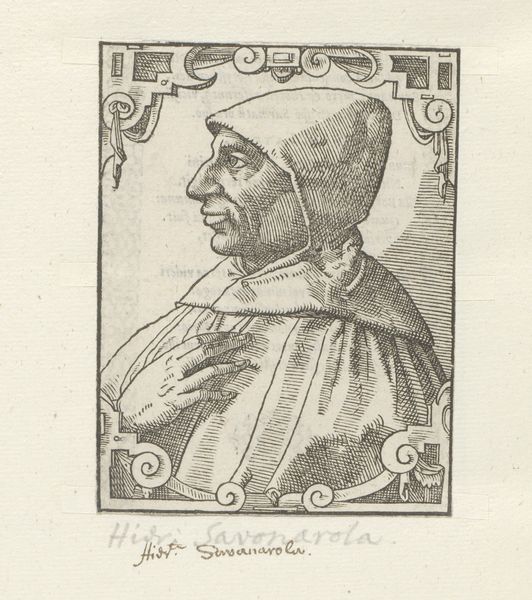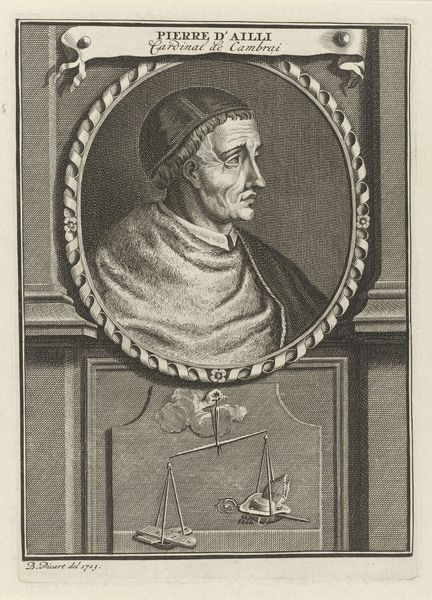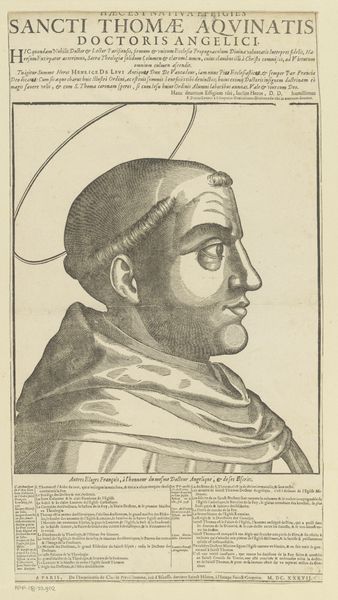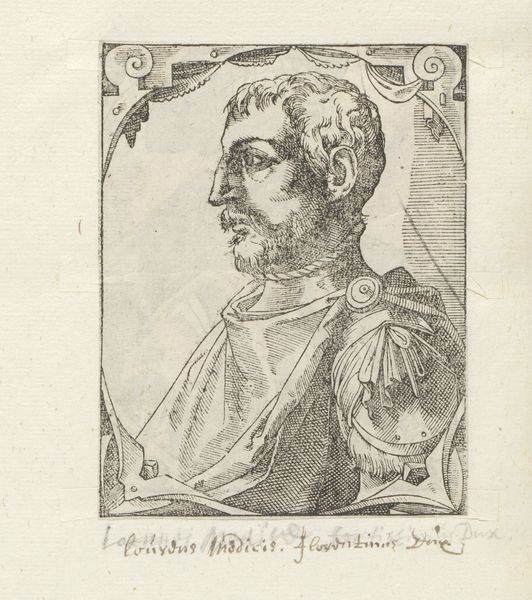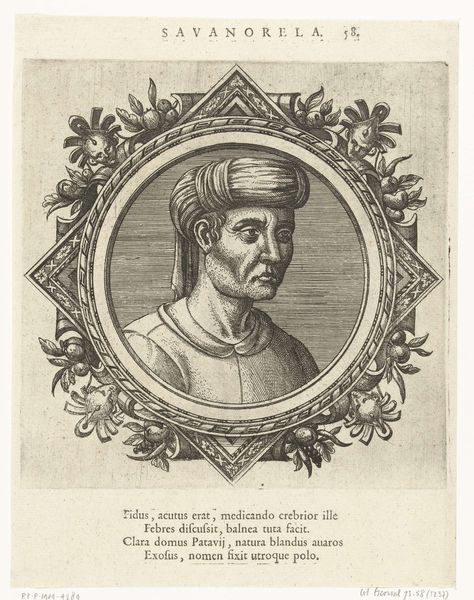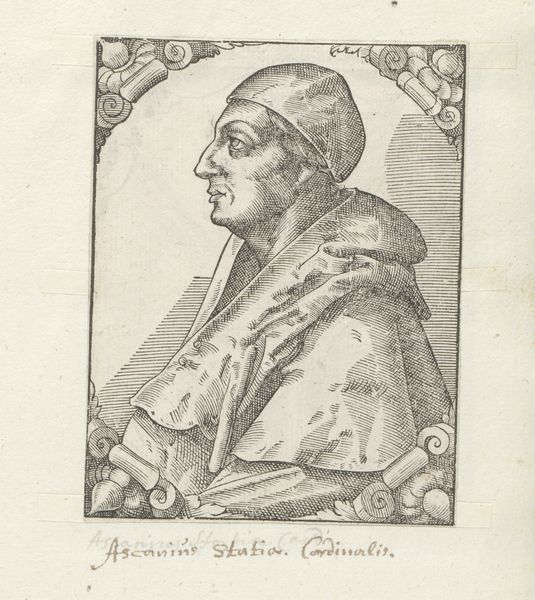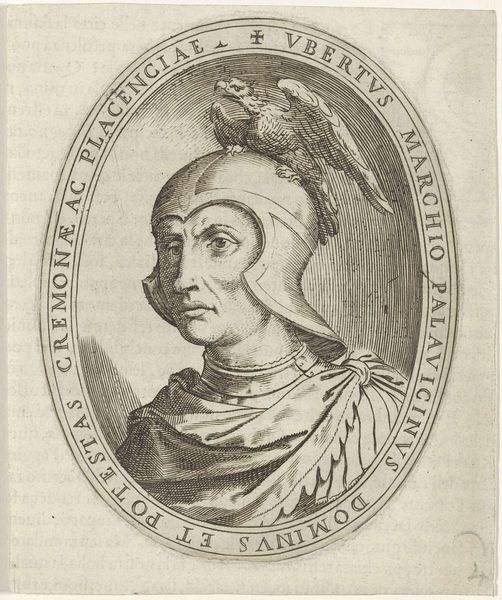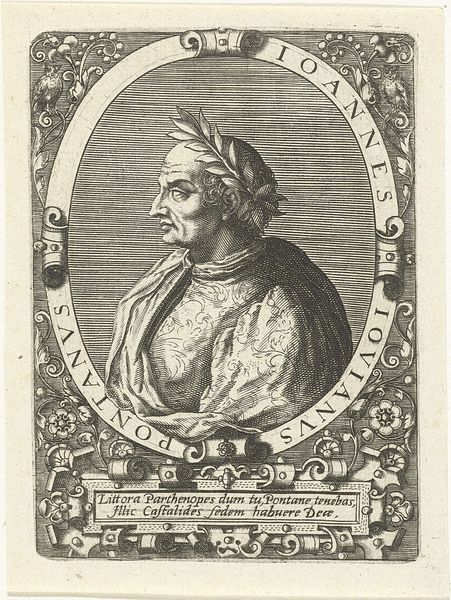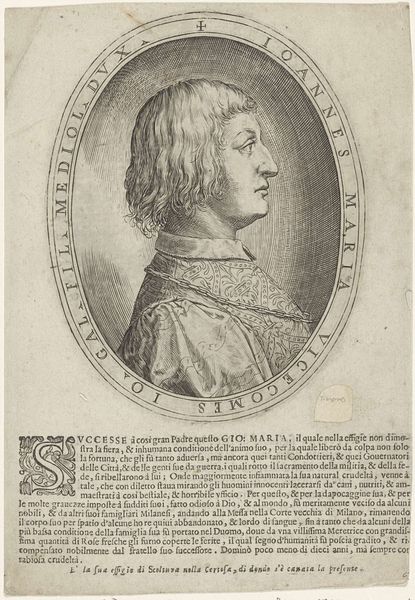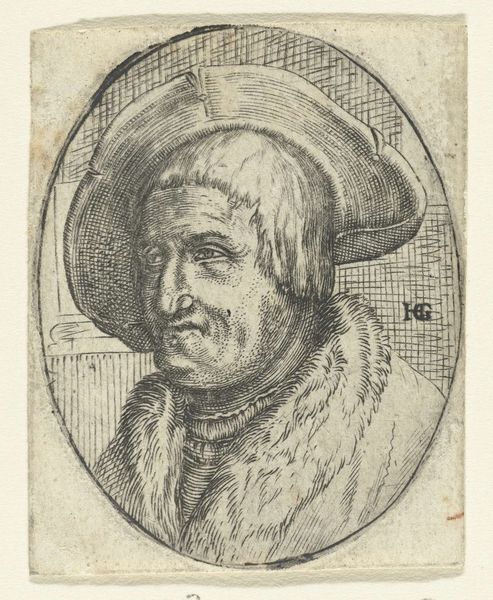
print, engraving
#
portrait
# print
#
old engraving style
#
figuration
#
form
#
line
#
academic-art
#
italian-renaissance
#
engraving
Dimensions: height 108 mm, width 82 mm
Copyright: Rijks Museum: Open Domain
Curator: Welcome, everyone. We’re looking at a print, dating roughly between 1549 and 1577, titled "Portret van Marcus Musurus," by an anonymous artist. Editor: Well, first impression? Haunted. Striking, but yeah, haunted. The deep lines really etch the face—it feels like peering into someone's soul, or at least a really intense tax audit. Curator: Indeed. It’s an engraving, a process where lines are cut into a metal plate, ink is applied, and then the image is transferred to paper. Think of the labor involved in that meticulous process. The tools, the workshop... it speaks to a highly skilled artisan tradition. Editor: Absolutely. You can almost feel the artist's hand, the pressure of the tool. And all those tiny, tiny lines! But it makes me wonder about Musurus himself. Who was he, to warrant such attention, such detail? I am sure it has some significance to form or representation. Curator: Marcus Musurus was a Greek scholar and a prominent figure in the Italian Renaissance, and his works led to certain discoveries in culture during that period. The portrait provides more than just a likeness. Look at the clothing, the detail around his face, framing him within foliage that has become typical in portraiture—it signals a certain social standing and a degree of intellectual cultivation. It all goes back to production, commission, patronage… Who paid for this and why? That’s key. Editor: I get that. The foliage could easily represent growth, like this man had a growing career or discovery. For me, it is the light though that I find myself really intrigued with, where is it coming from? Why are some lines darker than others? It is that tonal range within the engraving that really hits my gaze and keeps me captivated. Curator: Right, and the contrast highlights not just form, but also status. Engravings like this one were often reproduced, serving to disseminate knowledge and reinforce social hierarchies through images, acting as a material form of early modern public relations, in a way. Editor: So much thought behind what feels so… spontaneous and creative! Well, I for one, feel I understand much better both this person and the society in which they existed. Curator: Absolutely, and hopefully you can carry this insight forward as you enjoy the remaining exhibition.
Comments
No comments
Be the first to comment and join the conversation on the ultimate creative platform.
